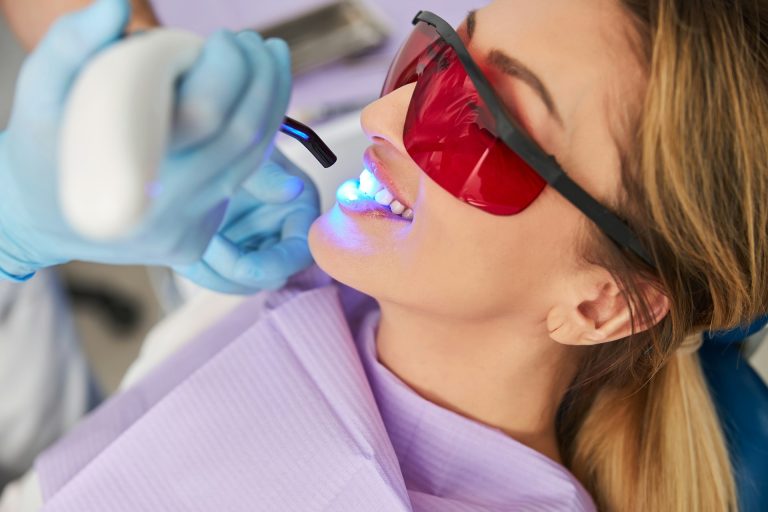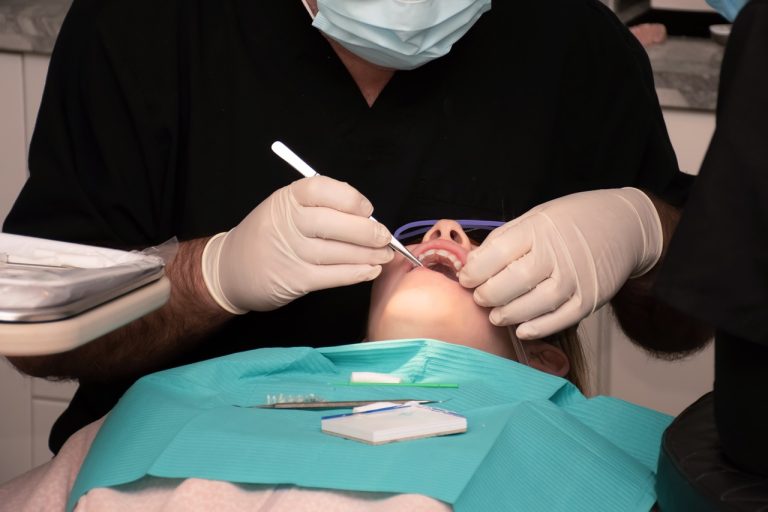Gum disease, an infection of the tissues that hold your teeth in place, can sneak up on you without much warning. It is essential to recognize the early signs of gum disease to take timely action. When we catch symptoms early, we can prevent the progression of the disease and maintain healthy gums and teeth.
Keeping an eye out for warning signs is crucial. Some symptoms can be mild and easily overlooked, but they can lead to more severe problems if untreated. It is helpful to know how to check for these issues at home. Simple self-check steps can give you a good idea of whether your gums need professional attention.
Early detection and prompt treatment can save you from discomfort and costly procedures down the road. Our role is to provide guidance on what symptoms to look for, how to perform self-checks effectively, and when to seek professional dental help. Understanding these steps can make a significant difference in your oral health and overall well-being.
Common Symptoms of Gum Disease
Gum disease can present itself in various ways, and it’s important to know what signs to look for. One of the most common symptoms is gums that bleed easily, especially when brushing or flossing. If you notice blood, it could be an early sign of gum disease. Other symptoms include red, swollen, or tender gums. These symptoms indicate inflammation, which is a response to infection or irritation in the gums.
Bad breath, or a bad taste in your mouth that doesn’t go away, can also signal gum disease. This happens because bacteria are breaking down tissue in your mouth, causing odors. Receding gums, where your gums start to pull away from your teeth, is another sign you shouldn’t ignore. This can make your teeth look longer and create spaces where bacteria can hide. Loose or shifting teeth can also be a severe symptom, indicating advanced gum disease, which requires immediate attention.
How to Self-Check for Gum Issues at Home
Knowing how to check for gum problems at home can help you catch issues early. Start by examining your gums in a mirror. Look for any redness, swelling, or changes in color. Healthy gums should be pink and firm. Check for any bleeding when you brush or floss your teeth. If you see blood frequently, this could be a sign of an issue.
Feel around your gums with your tongue to detect any tenderness or unusual sensations. You can also gently press down on your gums to check for pain or easy bleeding. Pay attention to your breath too. If you notice persistent bad breath, it might be due to gum disease. Finally, look at your teeth and gums in the mirror to see if your gums are receding or if there are any noticeable changes in your gum line. These simple checks can help you identify problems early and take action before they become more serious.
Common Symptoms of Gum Disease
Recognizing the symptoms of gum disease early can help prevent serious dental issues. The first stage, gingivitis, often presents with red, swollen gums that may bleed when you brush or floss. You may also notice persistent bad breath, which is caused by bacteria. As gum disease progresses to periodontitis, symptoms become more severe. Gums may recede, creating pockets around teeth where more bacteria can accumulate.
Other symptoms include loose or shifting teeth, pain when chewing, and a change in how your teeth fit together when you bite. Pus between your gums and teeth can also indicate a severe infection. If you experience any of these symptoms, it’s important to take action promptly. Ignoring them can lead to tooth loss and more extensive treatment.
How to Self-Check for Gum Issues at Home
Self-checking for gum issues at home is simple and can be very effective in detecting early signs of gum disease. Start by examining your gums in a mirror under good lighting. Look for redness, swelling, or any changes in color and texture. Healthy gums are pink, firm, and free of inflammation. Use your tongue to feel around your gums for any unusual lumps or pus.
Next, gently press around the gums to see if there is any bleeding or discomfort. Pay attention to any changes in your bite or if your teeth feel loose. Regularly monitor your breath for any persistent bad odor that doesn’t go away with brushing. Checking these signs monthly can help you catch gum issues early and take the necessary steps to address them.
Final Thoughts
Taking care of your gums is crucial for maintaining overall oral health. Recognizing the symptoms of gum disease, such as bleeding, redness, and bad breath, and conducting regular self-checks at home can help detect issues early. Early detection is key in preventing more serious conditions that can lead to tooth loss and extensive dental treatments.
At Colorado Gum Care Northglenn, CO, we emphasize the importance of regular gum check-ups and professional care to keep your gums healthy. Don’t wait until symptoms become severe. Schedule an appointment with Colorado Gum Care Northglenn, CO, today to ensure your gums are in the best possible condition. Let our periodontist in Westminster help you achieve a healthy, beautiful smile.







